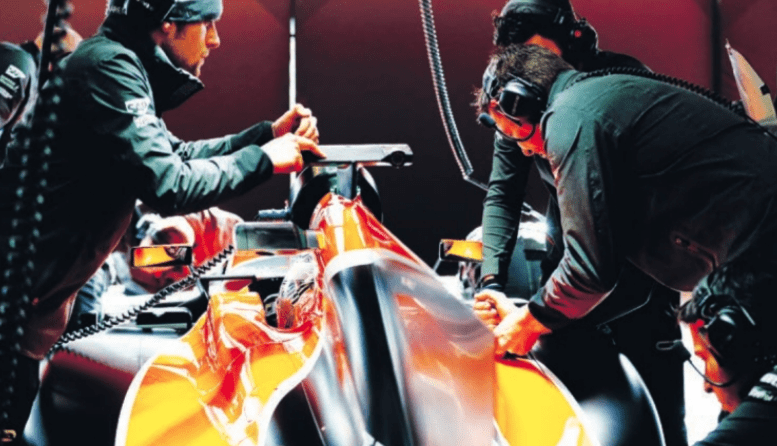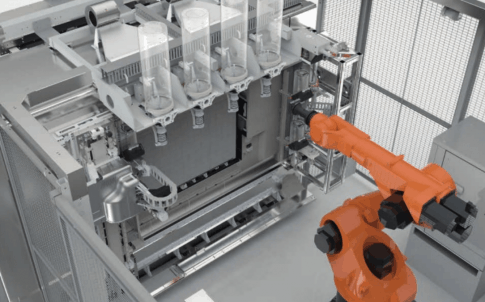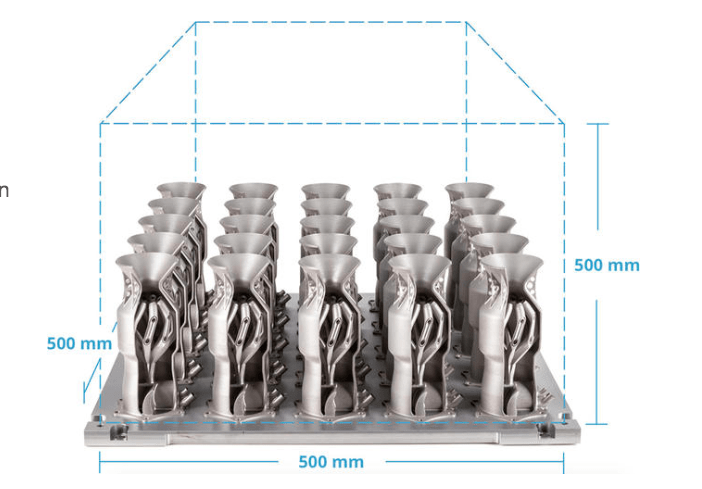
But fortunately, the excitable and often ill-informed speculation that characterised much of the early coverage of the topic has given way to a more measured view of the technology’s potential. And today, the broad suite of processes and systems that sit under the 3D printing/additive manufacturing (AM) banner are increasingly seen as complimentary tools in the manufacturer’s toolbox, rather than some existential threat to the established order.
There was a visible illustration of this at last month’s Mach 2018 show, the UK’s biggest and longest-running showcase of manufacturing technology, where organisations ranging from home-grown firms like Renishaw to the likes of Mazak and DMG-Mori – companies long-associated with traditional subtractive techniques – were all keen to demonstrate how 3D printing fits into their vision of manufacturing’s future.
Wandering the halls of Birmingham’s NEC, The Engineer heard from two of the sector’s undisputed heavyweights, Stratasys and 3D Systems, about how a technology once viewed with suspicion by some is now moving firmly into the manufacturing mainstream.
The history of these two firms is a useful reminder of 3D printing’s relatively long history – a pedigree that may still surprise some. 3D Systems founder Chuck Hull invented stereolithography back in 1986, while his opposite number at Stratasys – founder Scott Crump – pioneered another staple additive technique, fused deposition modelling (FDM), just a couple of years later.

Clearly, the technology has moved on considerably in the last three decades and both firms were keen to use Mach to demonstrate the degree to which techniques once used purely for design prototyping are now being adopted for a range of different production applications.
Elena Terraz is EMEA business manager for tooling at Stratasys. She told The Engineer that whilst prototyping still accounts for the largest share of the firm’s revenue, manufacturing is now viewed as the key growth area. “The opportunities to add more value are in manufacturing,” she said, “especially in industries where they don’t produce huge volumes or are moving towards customisation.”
One key area identified by Terraz is the use of 3D printing to produce customised tools for the assembly process. She highlighted a number of components designed to do just this, including assembly tools produced on FDM machines and used by automotive giant Opel to attach roof components on some of its vehicles.
She added that FDM is also proving an attractive option for the production of tooling used to produce composite parts. FDM composite tools, which take just days to produce, offer a compelling alternative to traditional tool fabrication techniques, which are labour intensive and can take weeks or months. “We can do an economic mould without having to build a big block of material,” she said, adding that this kind of capability is attractive in low-volume, high-tech areas – such as motorsport and aerospace – where the geometric complexity afforded by 3D printing can provide serious advantages.
One great example of this is Stratasys’ work with McLaren Formula 1 Racing – for whom it has produced a number of manufacturing tooling components, including sacrificial tools used to create the hollow composite brake cooling ducts on the MCL32 race car.
As well as tooling, Stratasys technology is also increasingly being used to produce final parts. For McLaren, for instance, the brackets that attach the MCL32’s hydraulic line have been produced using FDM.
Meanwhile, in the aerospace field, the firm recently announced that it had joined forces with Lockheed Martin to develop key final components for NASA’s Orion project, the spacecraft that will ultimately be tasked with taking humans to Mars and beyond. This mission will use more than 100 3D printed production parts, including a complex and critical part on the outside of the docking hatch, which is made from a new material called Antero, which is specially optimised to cope with the extreme temperatures and mechanical conditions encountered in space missions.
Terraz explained that while the development of speciality materials such as Antero helps open up new applications for 3D printing, the company is also developing the printing technology itself by examining new ways of depositing materials.
An example here is the Infinite Build 3D demonstrator, a concept system, developed in collaboration with Boeing, designed to show how by printing on a vertical plane, FDM could be used to make much larger lightweight parts. Another interesting development is a new robotic technology developed in collaboration with Siemens and aimed at the composites sector. This system demonstrates how a multi-axis robotic deposition approach, that orients fibres as it deposits them, could be used to produce complex composite components.
Whilst Stratasys used Mach to demonstrate manufacturing applications of its plastic-based techniques, fellow additive giant 3D Systems told a different story, and focused on the world of 3D metal printing.
Simon van de Crommert, the firm’s 3D printing sales manager, explained that Direct Metal Printing (DMP) is one of its fastest growing areas, and Mach, he said, was the perfect opportunity to cut through the hype and have serious manufacturing discussions. “There’s a gap between what you read in the newspapers to where people are comfortable using it,” he said. “The hype helps – without that we wouldn’t have the demand we’re seeing – but the people here need to have a full technical understanding and the conversations are a little more in-depth.”
These conversations are clearly beginning to bear fruit, and he pointed to a growing market for DMP in a number of sectors, notably aerospace and healthcare, where the technology is increasingly being used to make functional final parts.
He echoed the view that the technology is particularly compelling for low-volume applications, where its ability to build highly optimised components – impossible to machine with existing techniques – at no extra cost, can deliver significant advantages.

Components produced on 3D Systems' 8500 direct metal printing system
One showcased example was a titanium bracket produced for a geostationary satellite manufactured by Thales Alenia Space. Designed to hold the satellite’s solar panels, the component is topologically optimised to be 25 per cent lighter than a traditionally manufactured alternative – a major gain for a space project. The brackets were produced on one of the firm’s direct metal printing laser sintering machines in which a high-precision laser is directed to metal powder particles to selectively build up thin horizontal layers.
The latest product in this line is the so-called 8500 Factory Solution – a system that follows a growing trend in metal 3D printing machines of introducing multiple lasers – in this case three – to boost the productivity of the technology. “By fitting more lasers you triple the productivity of the machines, whilst maintaining more or less the same footprint. In a factory environment that’s going to be crucial,” explained van de Crommert. It uses its three lasers to produce metal parts up to 500mm by 500mm by 500mm, one of the largest diameter build sizes possible with existing machines.
The system’s hefty 5cm-thick doors belie another key element of the design aimed at meeting the demands of a real-life production environment. To ensure no impurities are introduced during manufacturing, and that the components are as close to possible as CNC quality, the system creates an inert environment by pulling a vacuum of -1,000 millibar, and backfilling the build area with argon. This is likened by van de Crommert to an extreme example of the way welding is carried out in inert conditions.




JLR teams with Allye Energy on portable battery storage
This illustrates the lengths required to operate electric vehicles in some circumstances. It is just as well few electric Range Rovers will go off...